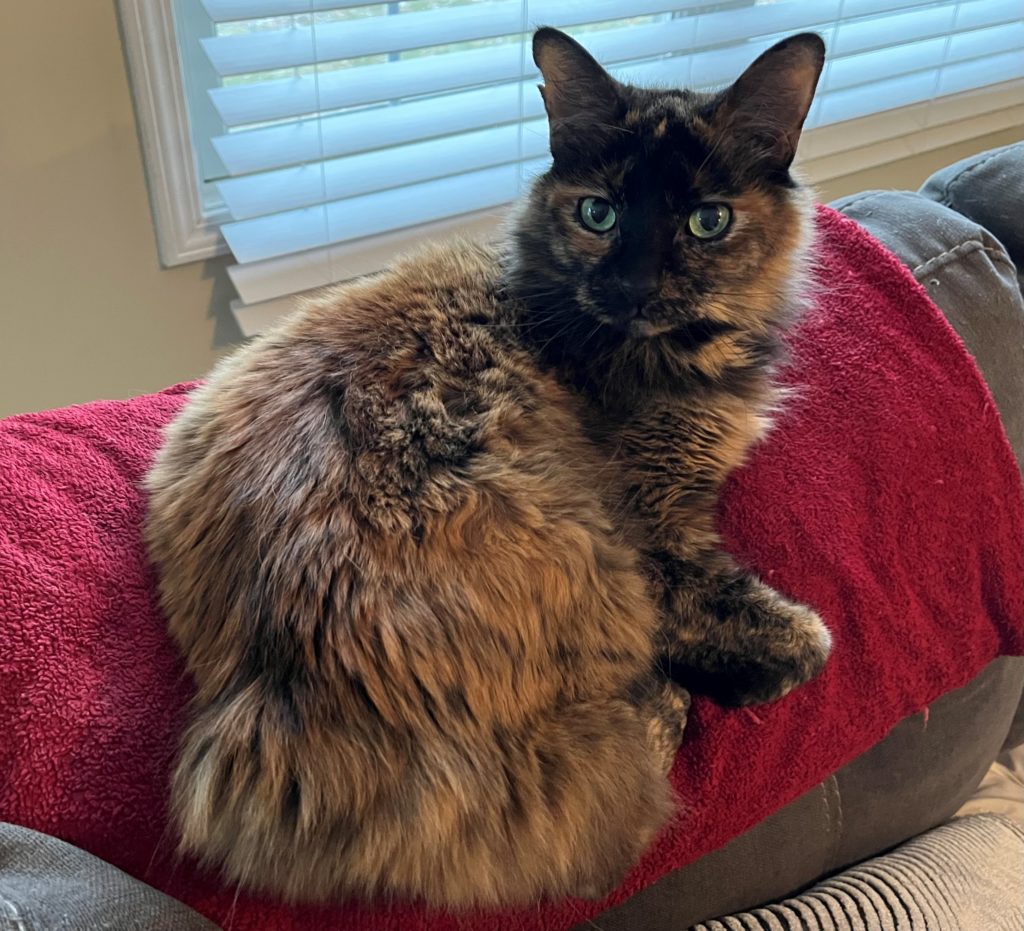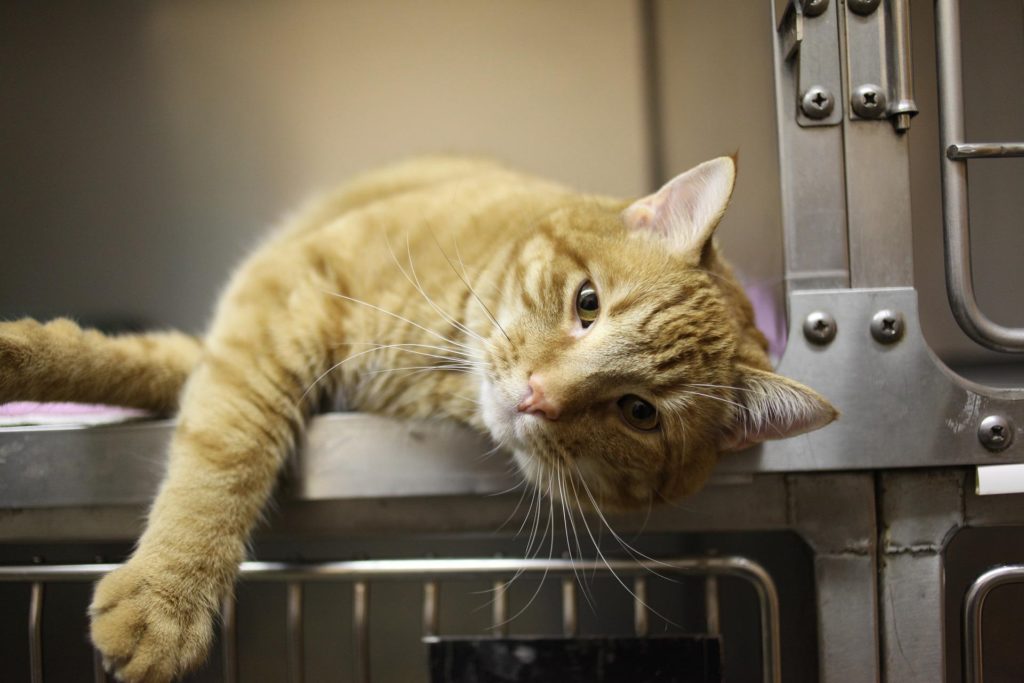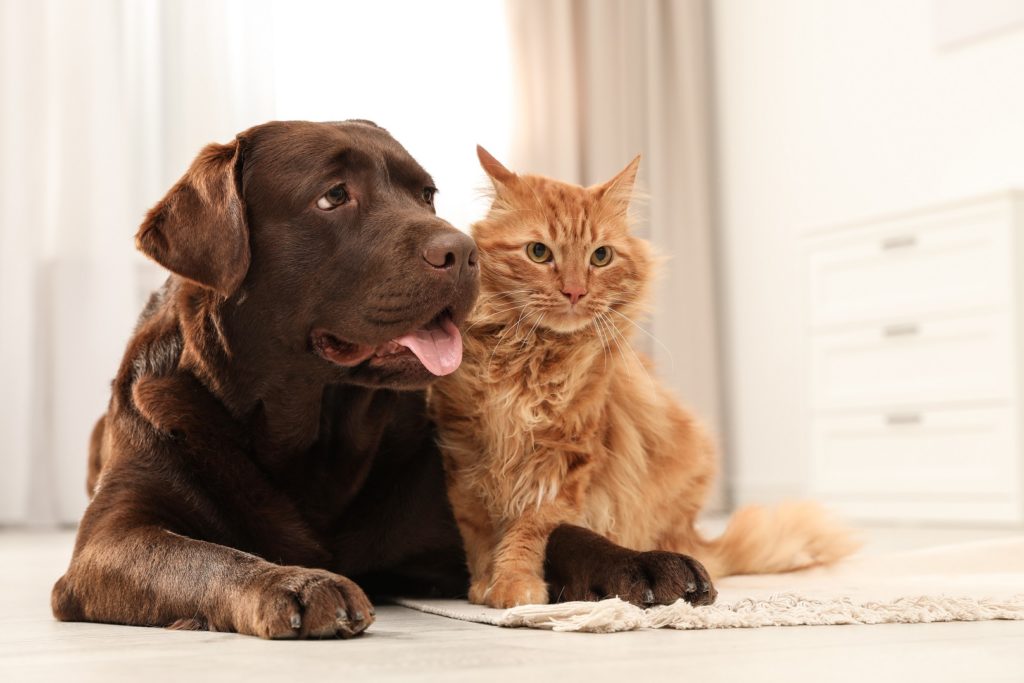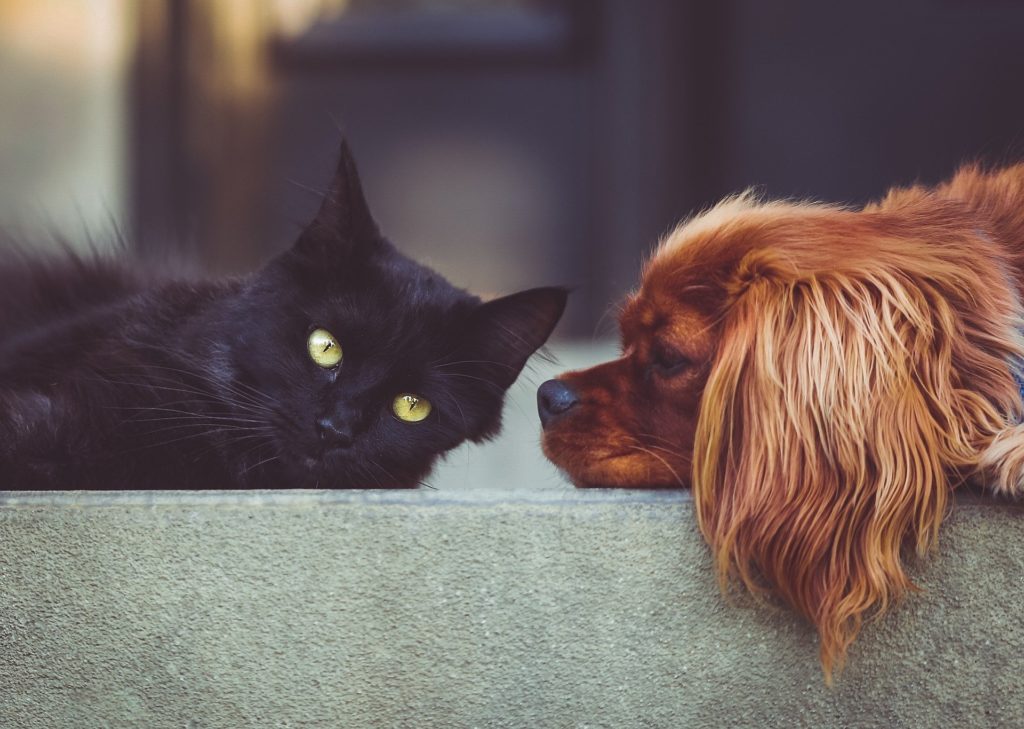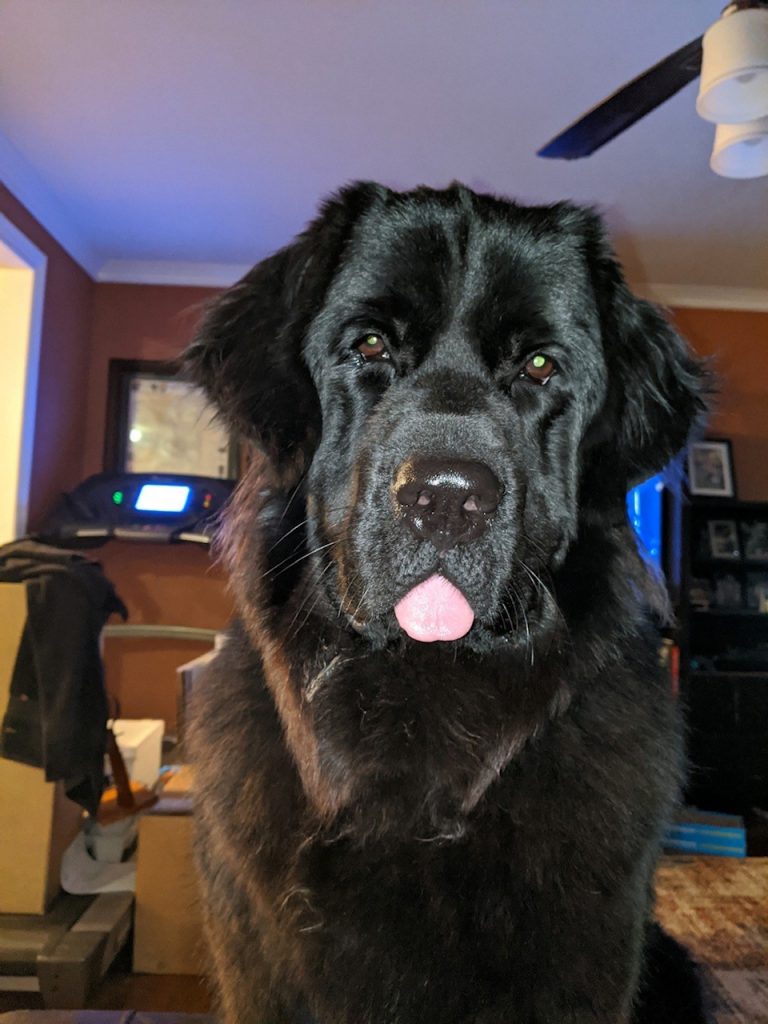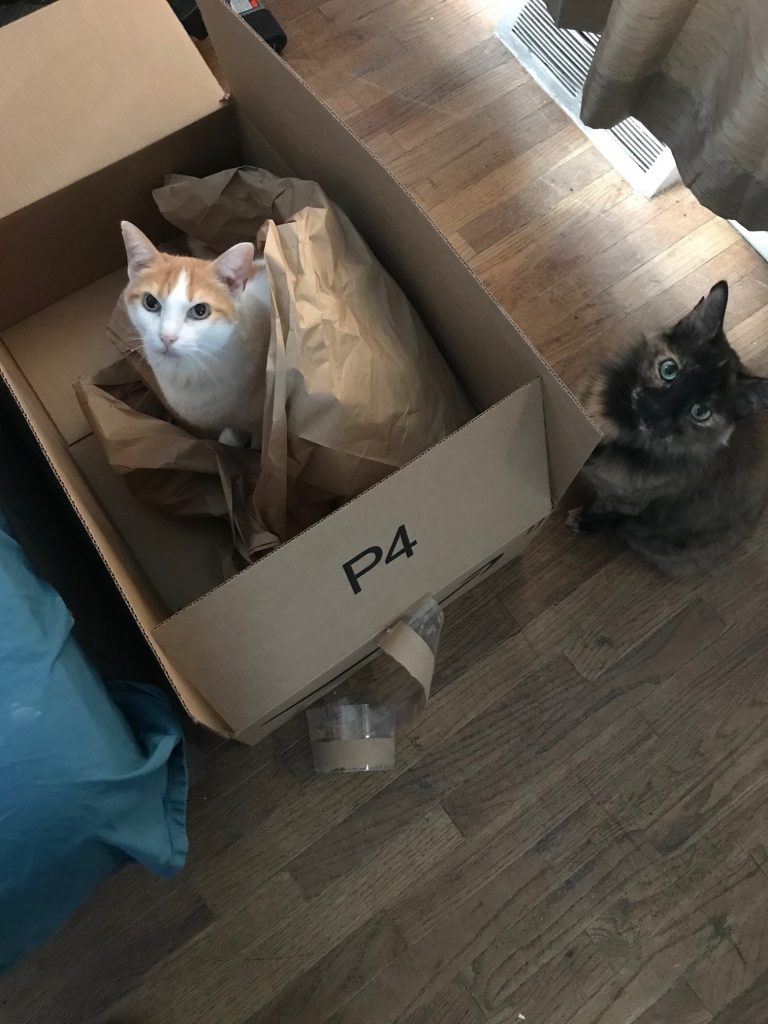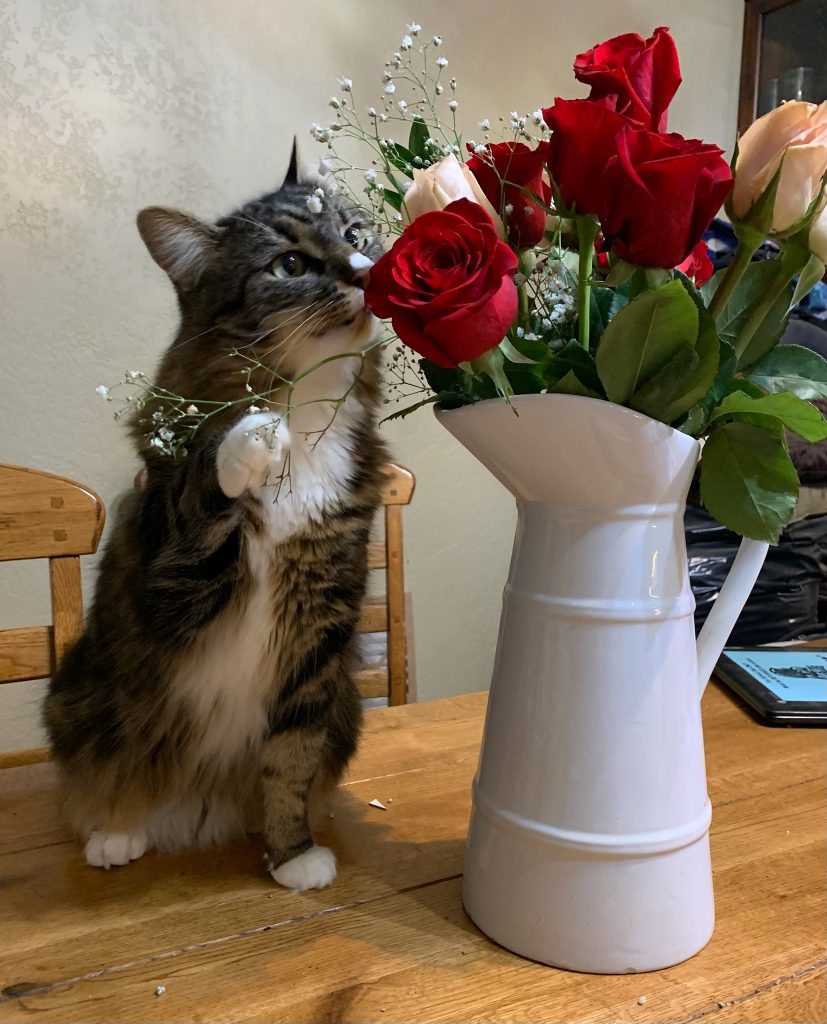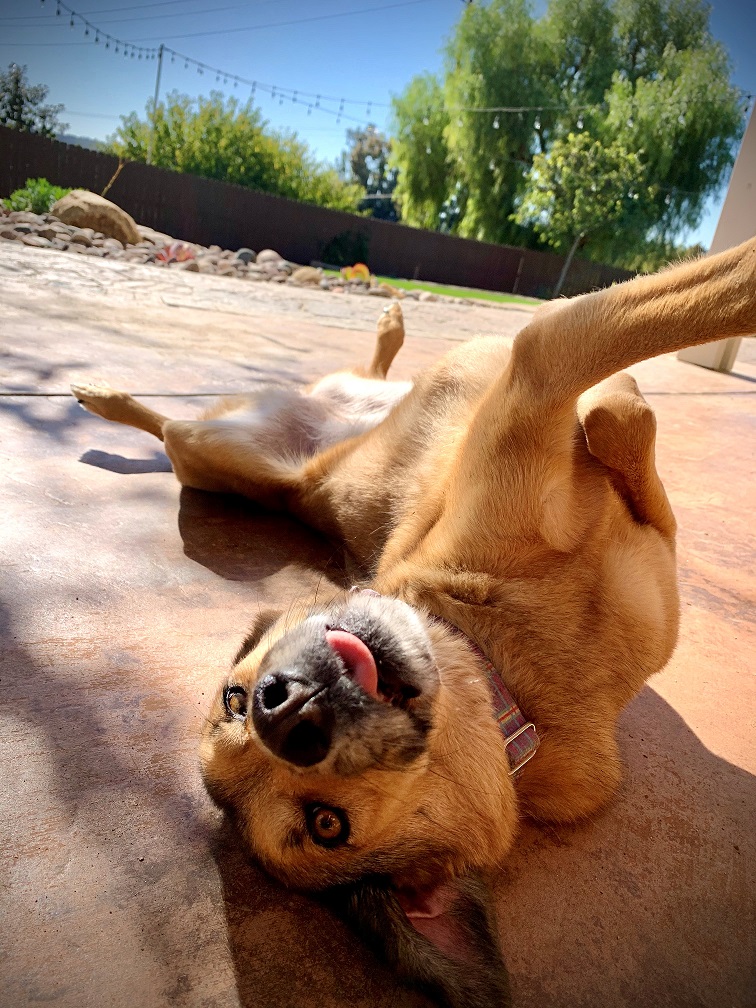Meet the VetStem Clowder!
Happy National Cat Lovers’ Month! We never miss an opportunity to talk about how much we love cats. We’ve already introduced you to the VetStem Pack so for this week’s blog, we wanted to introduce you to some of the VetStem Clowder! (And if you’re curious about how VetStem Cell Therapy is being used in cats, check out this blog.)
Frankie and Puck
Frankie and Puck are two Maine Coons owned by VetStem CEO, Dr. Bob Harman. Each one weighs 28lbs! As you can imagine, they hold their own with Mick and Gracie, the Border Collie and Aussie of the house.
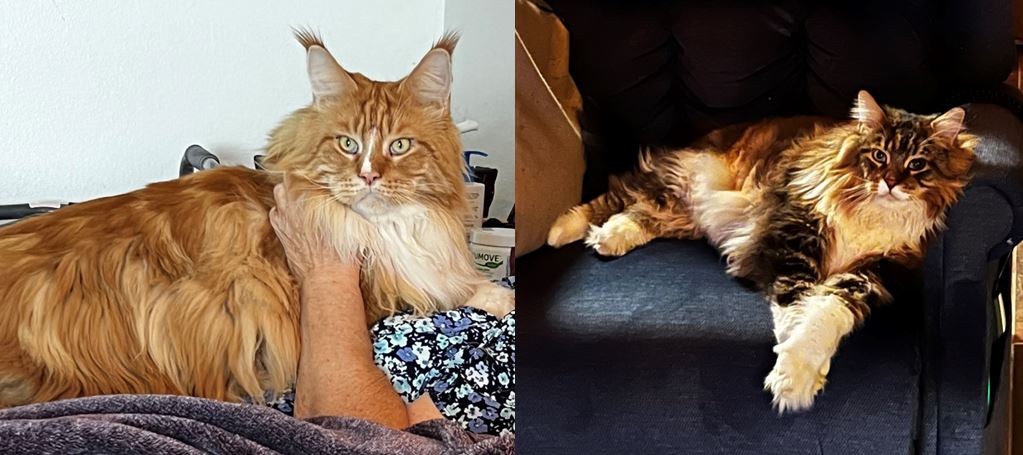
Josephine’s Amazing Dreamcoat aka “Phini” and Scarf
Phini and Scarf are both Oriental Shorthairs owned by our Director of Commercial Operations, Kristi. Phini tolerates Scarf who tends to get himself into trouble. For instance, he loves eating socks. Can you tell by that goofy look on his face?

Ali’I, Keone, Squirrel, and Lilly
These four cuties are owned by Customer Service Rep, Whitney. Apparently they each hang out in different locations in the house so the only way you’d know Whitney has 4 cats is if you shake the treat can and they all come running!

Gryffin
Gryffin is a Ragdoll owned by Customer Service Manager, Veronika. According to Veronika, he’s full of cattitude and rules the roost (as he should with a face like that!)
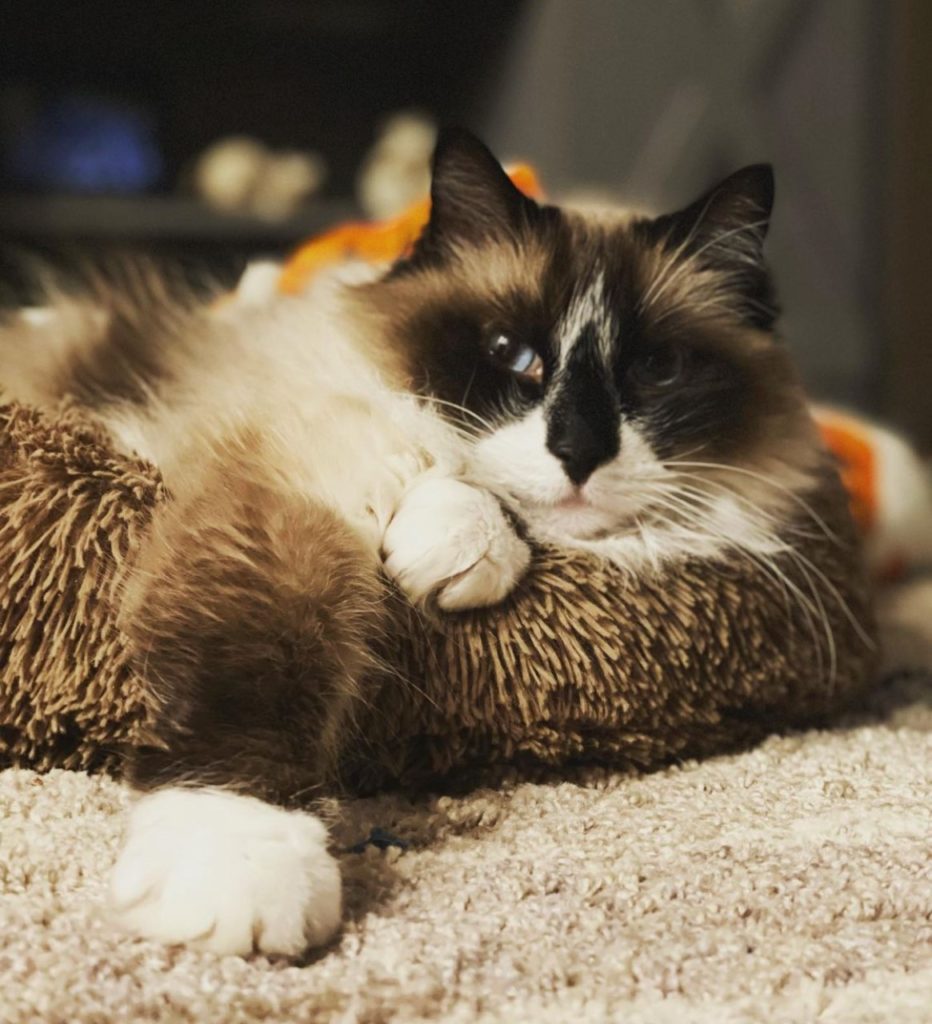
Portia
Portia is a Manx mix owned by our Marketing Assistant, Ashley. If you so much as brush up against her, her purr machine kicks into high gear. She’s a love!
